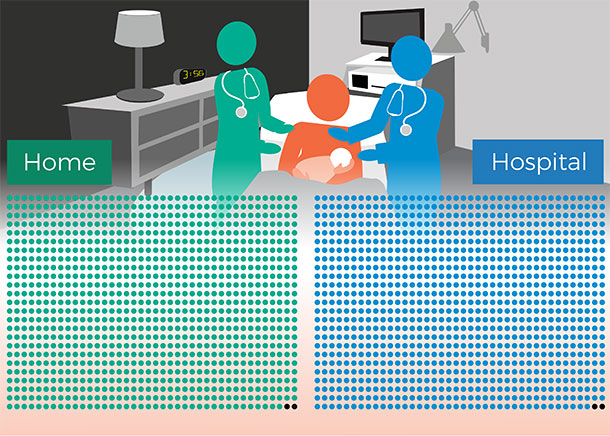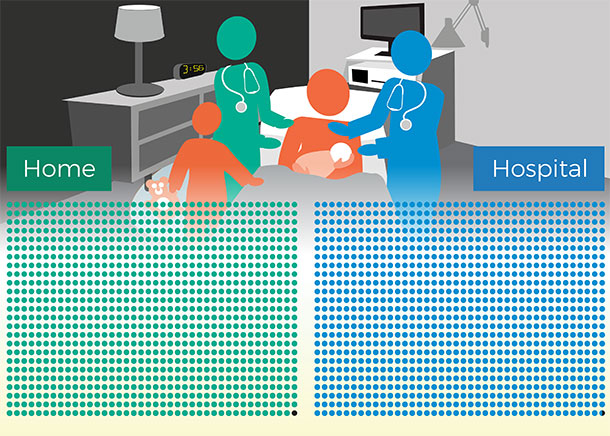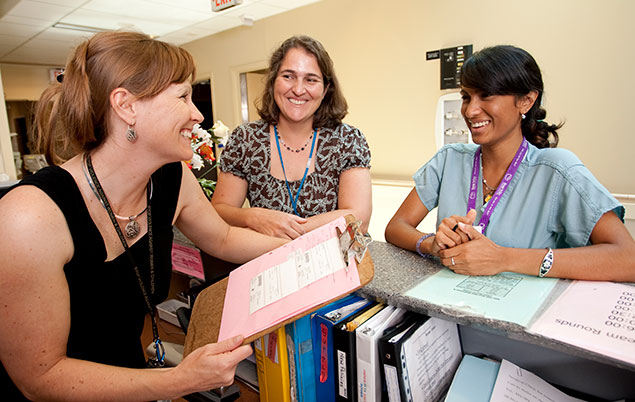If you are experiencing a healthy, low risk pregnancy, birth is generally very safe for both you and your baby regardless of care provider (midwife or doctor) and setting (home, birth centre or hospital).
There are many factors that contribute to the safety of midwife-attended hospital births in Ontario. Ontario midwives:
- are regulated health professionals In Ontario, regulated health professions are governed under the Regulated Health Professions Act, 1991 (RHPA) and health profession Acts (i.e., Medicine Act, 1991). This legislative framework establishes health regulatory colleges, which regulate the professions in the public interest. Health regulatory colleges are responsible for ensuring that regulated health professionals provide health services in a safe, professional and ethical manner. This includes, among other things, setting standards of practice for the profession and investigating complaints about members of the profession and, where appropriate, disciplining them.1
The regulatory college for Ontario midwives is the College of Midwives of Ontario. Ontario Ministry of Health and Long Term Care. Regulated Health Professions [Internet]. Canada: Web; 1991.
- have hospital privileges (See FAQs: What hospital will I give birth at?)
- receive an education specific to attending births and responding to birth emergencies both in and outside the hospital
-
engage in regular continuing competency training “Continuing competency training” refers to the minimum ongoing professional training the College of Midwives of Ontario requires of midwives in order to provide safe, responsible care throughout their career. For example, midwives must provide proof of certification in: Neonatal Resuscitation every year Emergency Skills Management every two years Cardio Pulmonary Resuscitation every two years to attend births and respond to birth emergencies both in and outside the hospital
- can quickly access specialist care (e.g. obstetrician, pediatrician) in the hospital if necessary to support the best health outcomes for you and your baby
What does the research say
There is excellent Canadian-based researchThe AOM’s Choice of Birthplace Guideline summarizes the findings of four Canadian studies that confirm the safety of home birth. analyzing the records of more than 45,000 low risk births attended by midwives at home and in hospital.
The research showed that the same number of babies are born healthy and well regardless of where the birth was planned to take place.
Infant outcomes by planned place of birth: hospital and home*
This is your first birth
For every 1000 babies born, 998 are born alive and live past 28 days regardless of whether they were born at home or in hospital

You have given birth before
For every 1000 babies born, 999 are born alive and live past 28 days regardless of whether they were born at home or in hospital

The same research also shows that:
- people who plan to give birth at the hospital have a greater chance of birth interventions like C-section and assisted vaginal delivery (forceps or vacuum)Forceps and Vacuum are tools used to speed up birth by helping guide the baby out of the birth canal. than people who plan to give birth at home
- people who plan to give birth at home but end up going to the hospital have less chance of interventions like C-section and assisted vaginal delivery (forceps or vacuum)Forceps and Vacuum are tools used to speed up birth by helping guide the baby out of the birth canal. than people who planned a hospital birth
Type of birth by planned place of birth: hospital and home*
This is your first birth
Planned
Home Birth |
|
| C-section |
13% |
| Assisted vaginal birth |
7% |
| Spontaneous vaginal birth |
80% |
Planned
Hospital Birth |
|
| C-section |
16% |
| Assisted vaginal birth |
11% |
| Spontaneous vaginal birth |
73% |
You have given birth before
Planned
Home Birth |
|
| C-section |
2% |
| Assisted vaginal birth |
1% |
| Spontaneous vaginal birth |
97% |
Planned
Hospital Birth |
|
| C-section |
4% |
| Assisted vaginal birth |
2% |
| Spontaneous vaginal birth |
94% |
Regardless of what the research says, the most important thing is that YOU feel safe in your chosen birth environment. Your midwife will support your decision to birth where you feel the most comfortable!
*These pictograms are based on a meta-analysis of findings from four research studies that examined the records of more than 45,000 midwife-attended births in Ontario and British Columbia.



